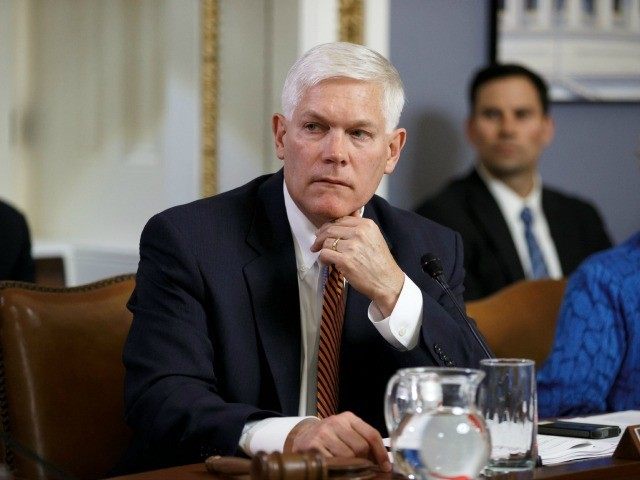The chairman of the House Rules Committee tells Breitbart News he’s sponsoring the “World’s Greatest Healthcare Plan Act of 2016” because he wants other Republicans to have a positive, conservative plan to present the American people going into the election in November.
“We took the best ideas to reform healthcare and put them together in one bill,” said Rep. Peter Sessions (R.-Texas), who in addition to chairing a committee referred to as “the Speaker’s Committee” because of its role in giving the speaker control over the lower chamber, also serves on the House Republican Steering Committee.
Sessions said many of the ideas have been put forward separately, but never together.
The key innovation in the plan is the switching from the current defined-benefit to a defined-contribution system. What Sessions and the sponsor of the Senate companion bill, Sen. William M. Cassidy (R.-La.), himself a medical doctor, proposed is giving individuals a $2,500 tax credit and their dependents a $1,500 credit. A family of four would have a tax credit of $8,000, enough to pay for a basic plan, similar to a well-managed Medicaid plan. The plan would also expand Roth Health Savings Accounts, which, unlike Flexible Spending Plans, would stay with the consumer and grow in a tax-free environment year-on-year.
Sessions said the mandates for individuals and employees are stripped away.
Healthcare in America changed during World War II. Before the war, individuals and families bought insurance the same way they buy car insurance or any other product or service. The switch came because the wages and salaries for domestic civilian workers became so inflated that people were being pushed into higher tax brackets meant for the truly wealthy.
To game the system employers, led by Kaiser Shipyards, paid all or part of their employees’ health plans. In the case of Kaiser and its sister companies, such as Kaiser Aluminum, these plans were built up into Health Management Organizations that actively worked with workers and providers. Others companies were less hands-on. The federal government contributed to this solution by giving companies a tax credit for funds spent on these plans.
Once this system took hold, it became the universal American model, but the system created problems. While Americans with a company plan got the advantages of group pricing, the self-employed or unemployed were boxed out of employer-centric model.
Then, of course, came the problem of portability. If an individual buys a plan and gets sick or injured, then he keeps the plan throughout his treatment–with the company on the hook for an event that occurred while on that contract. But, if the plan was part of a compensation package at one job, it creates the awkward reality of the pre-existing condition that often was not accepted by the new plan at the new job–but, no longer covered by the old plan at the old job.
Another problem with the company-centric model is that the administrative burden to companies become distraction on top of being an expense. Thus, much of the push by Big Business to reform healthcare was driven by the desire to jettison armies of clerks that had nothing to do with the company’s actual business.
John C. Goodman, the father of the Health Savings Accounts, told Breitbart News that nothing in the Sessions-Cassidy proposal forces anyone to change a situation, where they are happy and comfortable. But, it does empower Americans to be consumers of health insurance again.
The economist and president of the Dallas-based Goodman Institute said he helped put the plan together because he was convinced there were politically possible ways to reintroduce market forces into healthcare.
Republicans could not stop President Barack Obama and the Democrats from passing the Patient Protection and Affordable Care Act, or Obamacare, because they did not have credible alternative to what the president was presenting as a solution to real problem.
“It’s been six years, and they have not had a credible alternative, before this bill,” he said.
“This plan will be great for the economy,” he said. “It allows everybody to have health insurance. It doesn’t create burdens for business or labor. It gives everyone a fair tax subsidy for health insurance and achieves universal coverage, cost controls–it will do everything Obamacare was going to do, but didn’t do–without Obamacare.”
The congressman said the plan took 18 months to develop because more than 500 physicians weighed in with their real-world experiences and lessons learned.
“What we are really trying for is a grassroots effort that then goes through Regular Order, which must be respected, so we are going Ready, Aim and Fire, not Ready, Fire–Aim,” he said. Regular Order is the term for traditional process in the Congress of moving bills through committees and then onto the House floor.
“During the election, people can use this bill for messaging,” he said. “No member of Congress should be: ‘Well, I really don’t know what I am for.'”

COMMENTS
Please let us know if you're having issues with commenting.